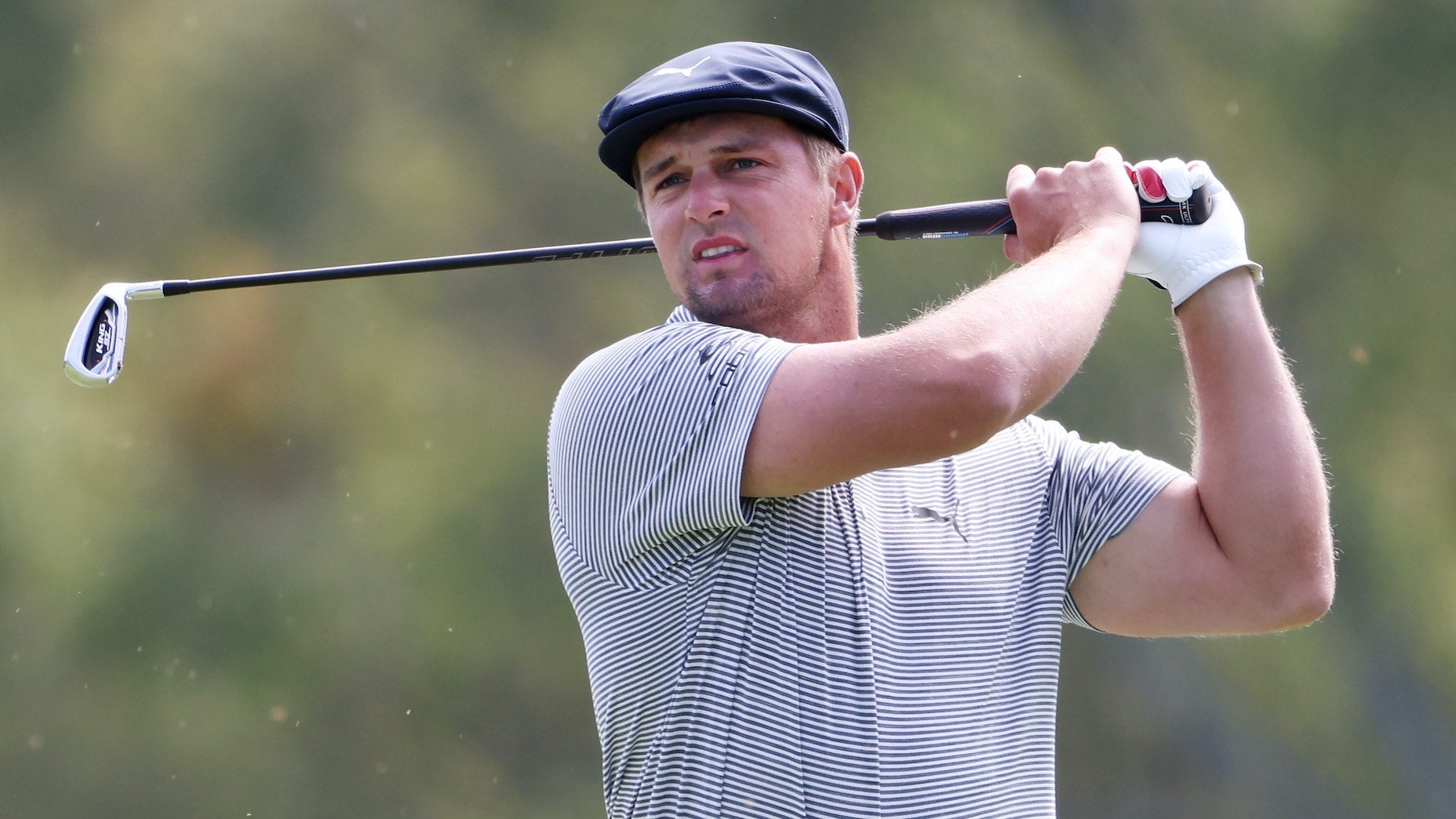Welcome to another edition of the Fully Equipped mailbag, an interactive GOLF.com series in which our resident dimplehead (a.k.a., GOLF’s managing editor of equipment, Jonathan Wall) fields your hard-hitting gear questions.
Why does Bryson DeChambeau use a game-improvement model for the 4- and 5-iron? Is there a play advantage? Higher launch? Lighter? — John Shepard (Twitter)
Let’s get this out of the way: Unless you’re willing to start from scratch and dedicate every waking minute to swinging like Bryson DeChambeau, I wouldn’t advise copying his equipment setup without doing your homework. If you were going to implement an aspect of his setup right away, I’d target an area of the bag that tends to be a problem for a wide range of handicaps. I’m talking about reliable long irons.
DeChambeau’s Cobra King SpeedZone One Length 4- and 5-irons are pure game-improvement clubs — Rickie Fowler has also embraced similar Cobra long irons in the past — which differs slightly from the better-player long irons we typically see in the professional ranks that deliver ball speed and forgiveness in a slightly more compact package. (Think TaylorMade P790 or Callaway Apex.)
DeChambeau’s long irons break the mold with a modest sole width and topline that’s typically reserved for mid- to high-handicappers who struggle to make consistent contact and interaction with the turf. Through practice and testing, the reigning U.S. Open champion has found the clubs to be a benefit on the course as well.
Cobra King SpeedZone
“He plays with that 4- and 5-iron for the same the reason that most of us need to play with something generally a little bigger, which I think it pretty cool,” Ben Schomin told me on this week’s Fully Equipped podcast. “A lot of better players, regardless if they’re on the PGA Tour or the club champion at your home course, there’s a lot of players that can benefit from a little game improvement.”
DeChambeau’s “play advantage” is pretty simple: the wide sole is versatile enough to keep it from getting caught up in the rough, while the oversized profile, deep center of gravity and perimeter weighting all but guarantee a high launch and similar ball speeds, regardless of where the ball impacts the face.
As for the weight, all of DeChambeau’s irons, from the 4-iron through pitching wedge, are a constant 270 grams. But that has more to do with the single-length concept he employs. That part of his long-iron setup would take some getting used to. The game-improvement head with a conventional-length shaft, on the other hand, could be a winning combination from the jump. Just remember to get a certified club-fitter involved to find the best fit.
